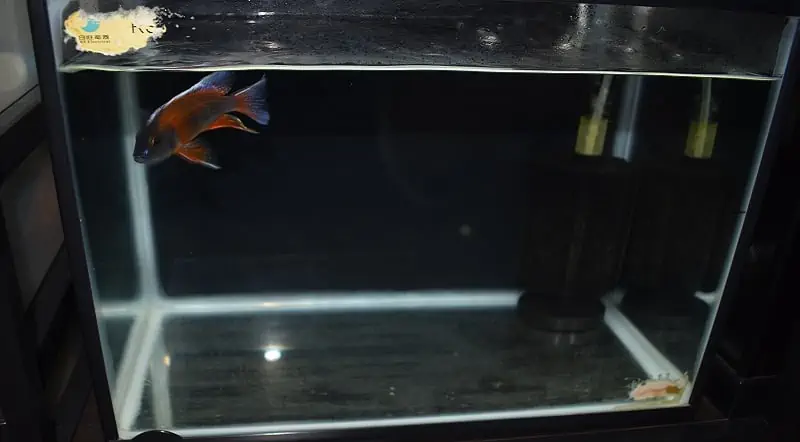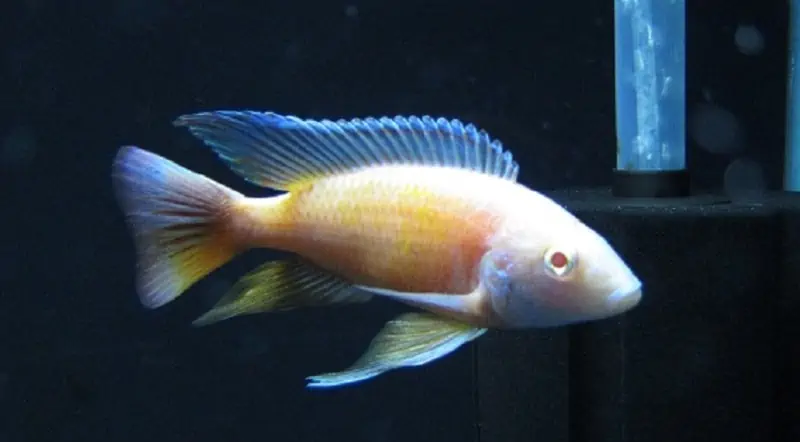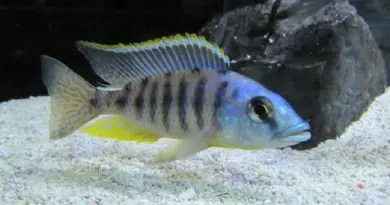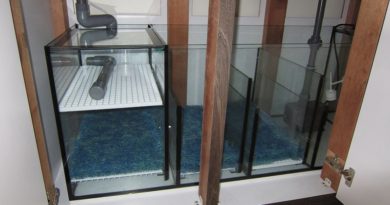Setting Up A Quarantine Tank
A very important but often overlooked piece of equipment for any serious cichlid keeper is the quarantine tank. Its purpose is to allow for monitoring of new stock for any health issues before being released into your display tank and for isolation of sick fish if a disease does break out in your main tank. That being said ideally you should keep the setup as simple as possible.
For African cichlid keepers, a quarantine tank is an essential item. Aside from the primary function of quarantining new or sick fish, it can also be used for nursing injured fish back to health or as a time-out for an overly aggressive bully.
Quarantining new fish for a period of 3 or 4 weeks is recommended before introducing them to your main tank. During this time, you can observe the new fish for any signs of disease which may not have been visible on the day of purchase. It also gives your new fish time to adjust to whatever food you are feeding. If after the quarantine period no problems develop, you can then introduce the new fish to your main tank.
From time-to-time fish in your main tank may pick up injuries or illness due to bullying, stress, disease or water quality issues. A quarantine tank allows you to remove the fish from your main tank for special treatment.
Quarantine Tank Benefits:
- Used to monitor new fish before they are added to your display tank
- It allows you to isolate sick fish and avoid the spread to disease to the rest of your stock.
- Injured fish can be nursed back to health without haressment from other fish.
- The quarantine tank can be used as a time-out for an overly aggressive fish.
- Medication is expensive. It requires less medication to treat a 10 or 20 gallon quarantine tank than your 125 gallon main tank.
- Some types of medicine could kill off the beneficial bacteria colony in your filter.
Keep it as simple as possible:
I like to keep my quarantine tank as simple as possible. Gravel and decorations are not needed and should be avoided as new or sick fish may not eat and the leftover food will decay and pollute the water. It is much easier to vacuum left over food and fish waste from a bare bottom tank.
- Small tank (subject to the size of the fish to be quarantined)
- Air Pump
- Sponge Filter
- Water Heater
- Thermometer
Below is a photo of an Aulonacara Jacobfreibergi Eureka Red after two weeks in a quarantine tank. At the LFS he was being kept in a tank with mostly mbuna and his fins were quite badly nipped. Despite the nipped fins he was swimming around comfortably in the tank, had a nice shape and was showing decent color considering the damage he had received to his fins.

The quarantine tank setup is very simple, a 10 gallon tank with a sponge filter. I don’t use any decorations or substrate. An air pump is required for the sponge filter. I’m not adding any medication for this particular treatment but have added 2 tablespoons of aquarium salt to help the injuries to heal.
A 50% water change is done twice a week with a tablespoon of salt added after each water change. During the water change, I vacuum any waste from the bottom of the tank. While I do have an LED strip above the tank I don’t switch it on often, only for a minute or two each day to inspect the progress of the healing and for signs of other diseases. Not having the lights on will provide a more relaxing environment for the recovering fish.
Initially, the Eureka Red would not accept any of the pellets I was feeding. However, after feeding with frozen brine shrimp for a few days he started eating the pellets. The fins have mostly recovered but it will take a while longer for the point at the rear of the dorsal fin to grow back completely. The colors have improved and he’s starting to show potential.
After another couple of weeks of observation, he should be ready to be moved to the 3ft grow-out tank.
Tips:
- Feed floating pellets if possible. They are easier to remove if not eaten.
- Use a piece of narrow tubing to vacuum any uneaten food and fish waste from the bottom of the tank regularly. This will remove the dirt without taking too much water
- Perform water changes frequently to keep the water quality up. If you are not overfeeding and are removing the waste regularly, twice a week water changes should be sufficient.
- Remember not to have carbon in your quarantine tank filter as the carbon will remove any medication you are using from the water.
Conclusion:
You will definitely need a quarantine tank at some point. It’s a good idea to keep some aquarium salt and epsom salt at home for emergencies. It has no expiry date and can be used initially to get treatment started. Clean water, salt and a stress-free environment can cure a multitude of ailments.
Remember your quarantine tank doesn’t need to win any photo of the month competitions. It just needs to serve a purpose.
Thanks for reading. If you found this article helpful, don’t forget to share 🙂



